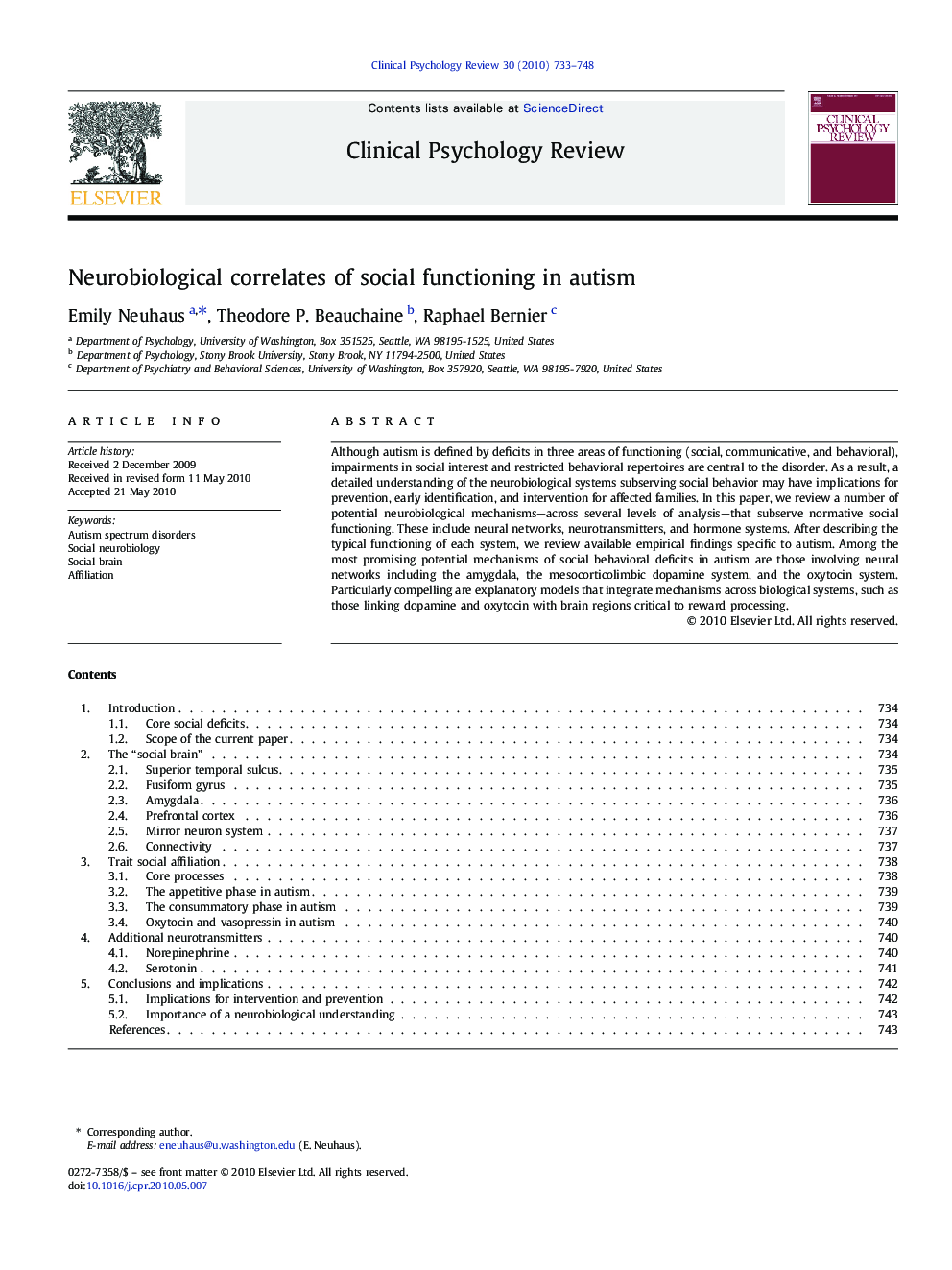| Article ID | Journal | Published Year | Pages | File Type |
|---|---|---|---|---|
| 903884 | Clinical Psychology Review | 2010 | 16 Pages |
Although autism is defined by deficits in three areas of functioning (social, communicative, and behavioral), impairments in social interest and restricted behavioral repertoires are central to the disorder. As a result, a detailed understanding of the neurobiological systems subserving social behavior may have implications for prevention, early identification, and intervention for affected families. In this paper, we review a number of potential neurobiological mechanisms—across several levels of analysis—that subserve normative social functioning. These include neural networks, neurotransmitters, and hormone systems. After describing the typical functioning of each system, we review available empirical findings specific to autism. Among the most promising potential mechanisms of social behavioral deficits in autism are those involving neural networks including the amygdala, the mesocorticolimbic dopamine system, and the oxytocin system. Particularly compelling are explanatory models that integrate mechanisms across biological systems, such as those linking dopamine and oxytocin with brain regions critical to reward processing.
